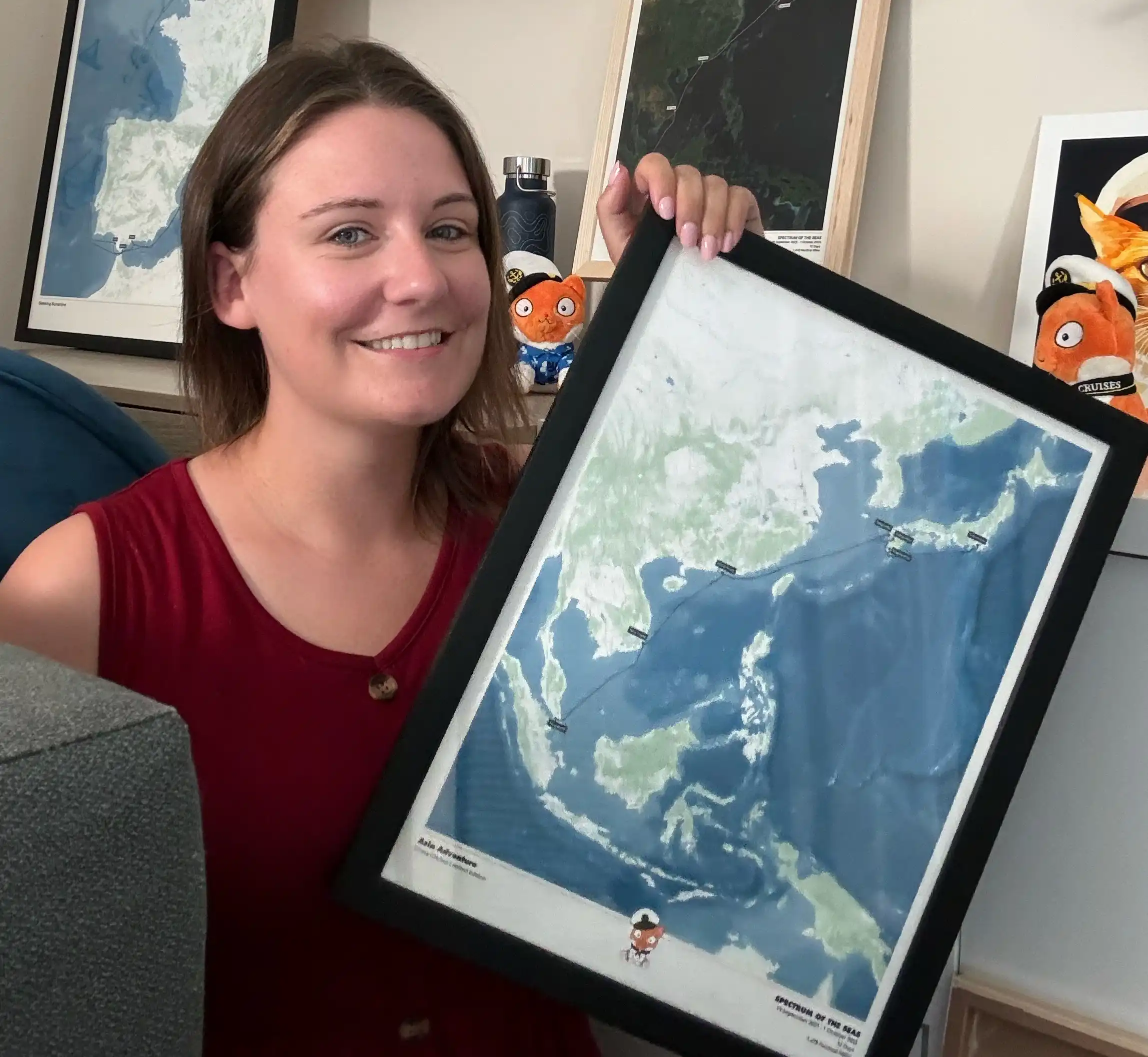If you’ve ever booked a cruise, you might have wondered what the cruise line is actually spending your money on.
Of course, costs and profits may vary from year to year, but these figures are based on cruise line financial statements.
If you paid a typical cruise fare of £1,000 – this is roughly how the money will be distributed. (It makes no difference if you pay in dollars, euros or another currency – the percentages remain the same.)

The Cost Breakdown of a £1,000 Cruise Fare
Food Costs: 6%
Food is a massive part of the cruise experience. You have unlimited access to meals – breakfast, lunch, dinner, afternoon tea, and evening snacks.
Surprisingly, only 6% of your cruise fare goes towards feeding you whilst you are onboard.
On a 7-night Royal Caribbean cruise, the kitchen will get through 60,000 eggs, 9,700 pounds of chicken, and 20,000 pounds of potatoes.
The bulk purchasing power of cruise lines helps keep food costs surprisingly low.
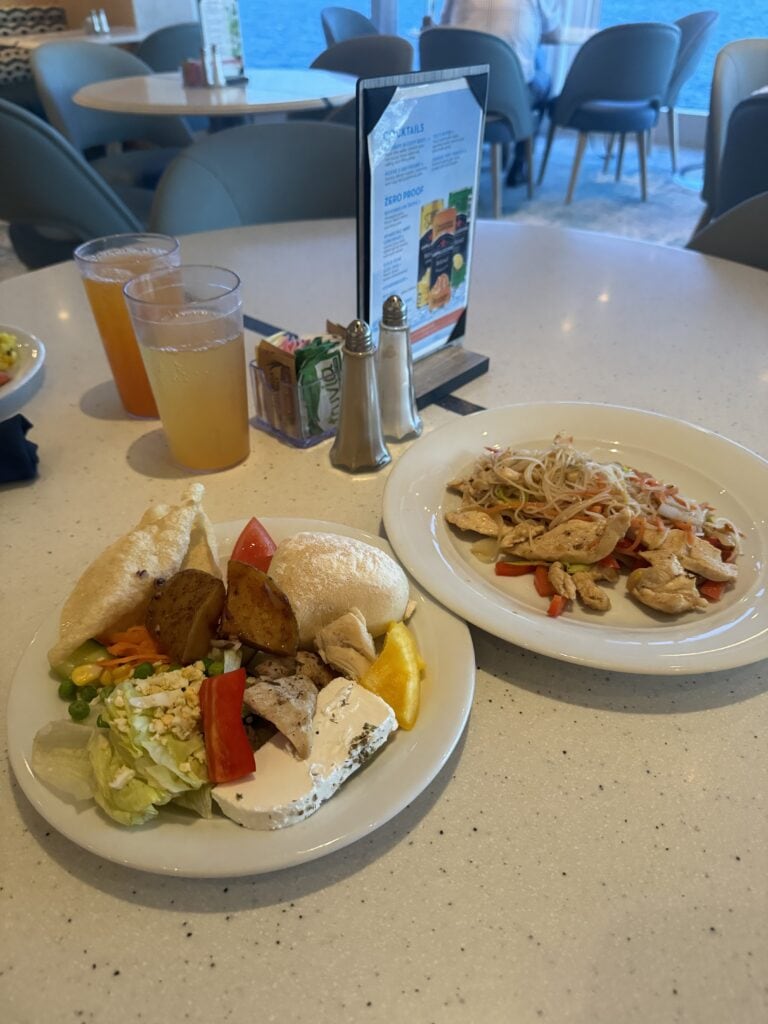
Fuel: 8%
Fuel is a hefty expense due to the immense size of cruise ships and the distances they cover.
The industry standard for fuel consumption might reach around 1,000 gallons per hour, which uses up around 8% of your fare.
Of course, with the introduction of LNG and battery-powered ships, this cost could decrease. Whether those savings would be passed on to the passenger is anybody’s guess…
The most modern, battery-powered ship I have sailed on was the Havilla Polaris, in Norway. She uses a combination of battery power and LNG fuel when she sails. Find out about that amazing adventure here:
Commissions: 5-10%
Travel agents earn about around 5-10% in commission for each booking.
Whether or not you use an agent, this cost is factored into the cruise pricing strategy – so you may well use one, and get the best available service. You’re paying for it anyway…
Find out why it is best to use a trusted travel agent here:

Transportation: 5%
Transport costs, including moving food, supplies, and staff to the ship, account for 5% of your fare.
This can involve a complex logistics network, using many modes of transport.
Operational Costs of the Cruiseline 12%
This includes the day to day costs of running a cruise line – Port fees, Insurance, staff and admin on shore etc
Expenses Onboard The Ship
Onboard Operational Costs: 7%
This category covers the daily operations necessary to maintain the cruise ship’s service and amenities.
It includes ensuring cleanliness, stocking bars and restaurants, and general ship maintenance.
Staff and Service: 10%
Payroll for onboard staff like room stewards, chefs, waiters, and the entertainment team accounts for 10% of the fare.
If gratuities are included in your fare, they fall into this percentage.
Otherwise, tips might add at least £10 per person per day to your onboard expenses.
Find out more about gratuities – and which cruise lines include them within the cruise fare here:
Cruise Gratuities: A Simple Step by Step Guide For First Time Cruisers

Marketing: 14%
Marketing is critical for the cruise line for filling cruises and promoting new routes.
This includes advertising through traditional methods – TV and newspapers -and digital channels like YouTube.
This represents 14% of your fare.
Depreciation: 11%
Similar to cars, the value of cruise ships and their equipment depreciates over time.
Depreciation costs the cruise line about 11% of each fare, reflecting the gradual loss in value of the ship.
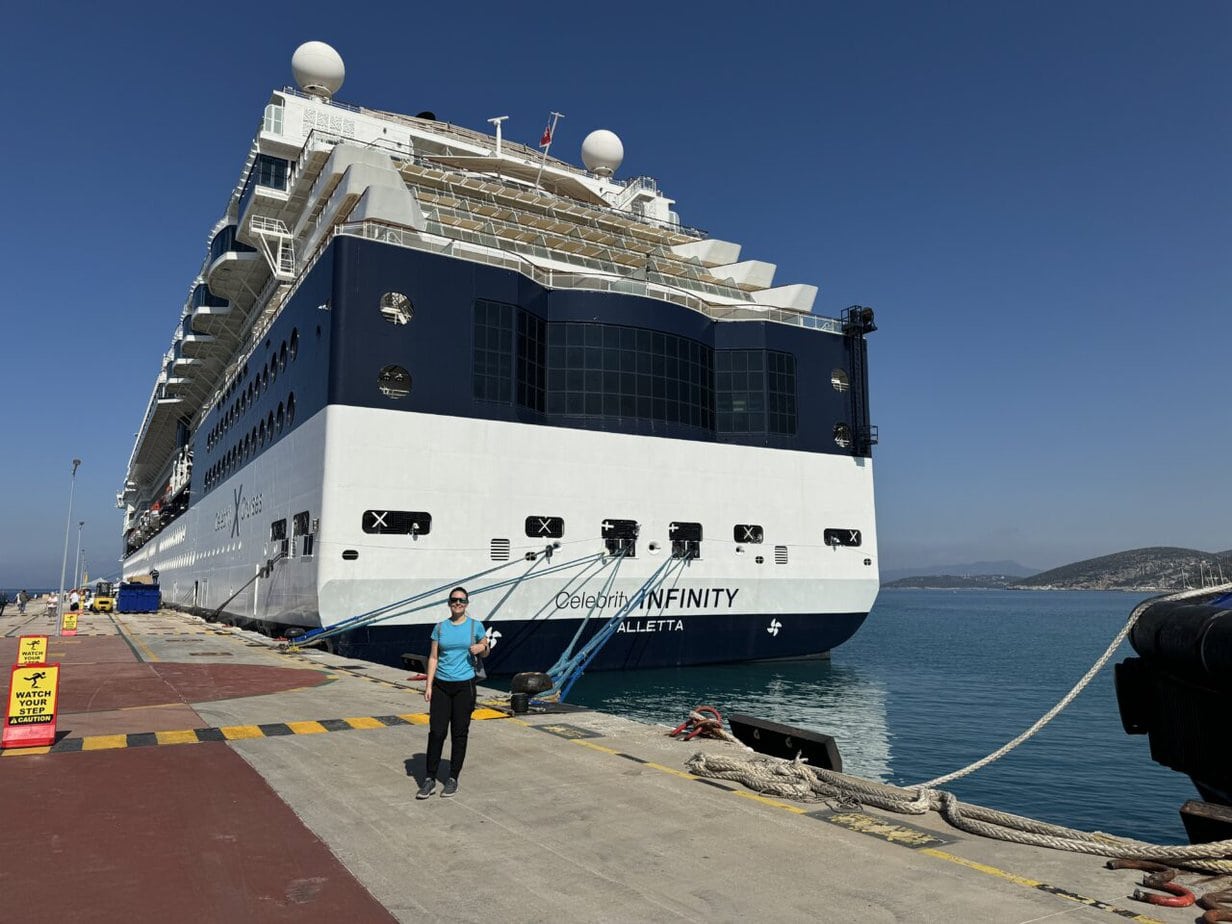
Profit: 17%
Net profit margins for cruise lines are usually around 17%.
These funds are reinvested into the company for growth and development.
Recent financial reports from companies like Royal Caribbean indicated a profit of 15-19% from cruise fares over several years.
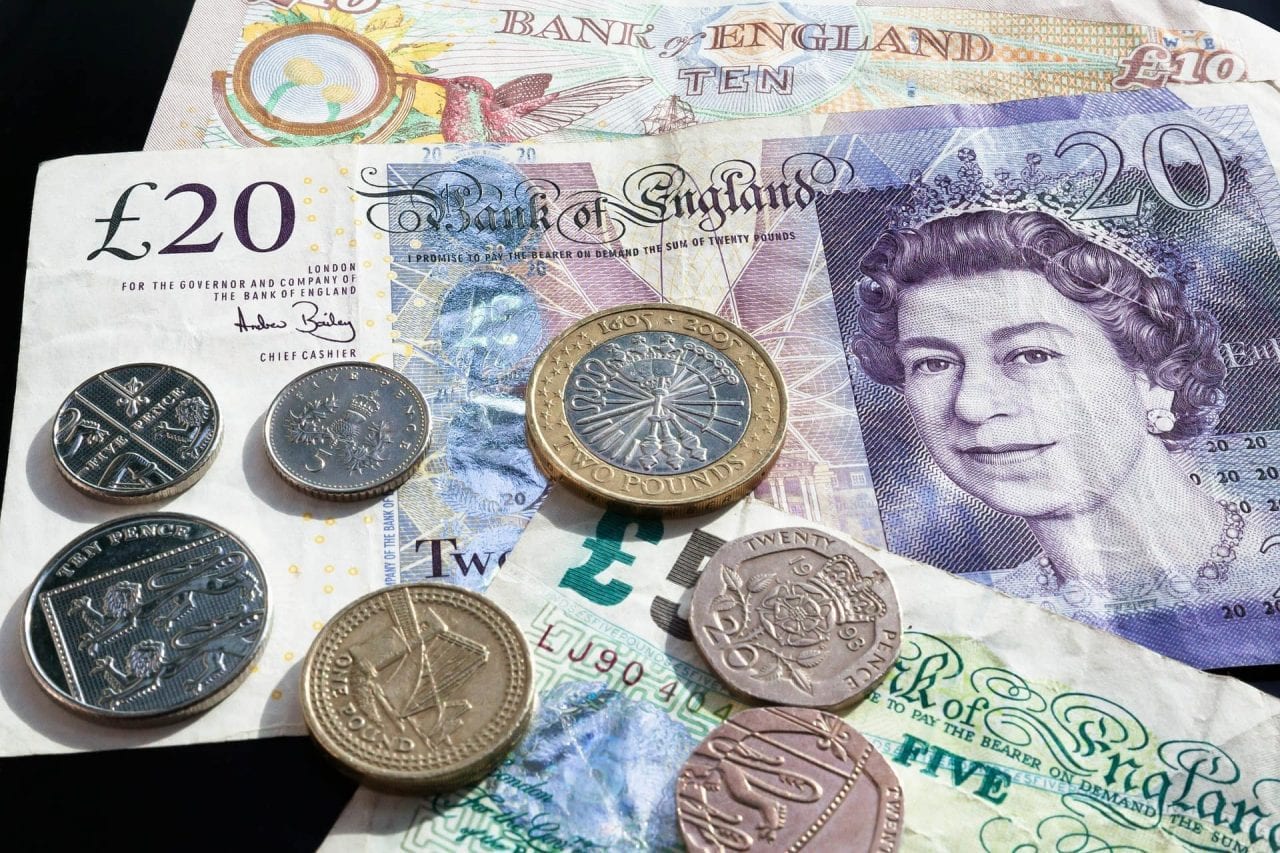
Additional Onboard Spending
Above the cruise fare, additional spending averages about £400 per £1,000 cruise fare.
Onboard spending includes expenses like speciality dining, drinks, casino gambling, spa treatments, excursions and shopping.
Speciality dining options might charge a flat rate per meal – £50 for instance, or operate on a pay-per-item basis.
I always try to keep my onboard spending down to a minimum – nothing worse than ending up with a large credit card bill at the end of your holiday! Find out how I do that here:
Cutting Onboard Expenses, BEFORE You Cruise. (Drinks, Speciality Meals, Excursions and More)
Your £1,000 cruise fare is carefully allocated across the various areas of the company, ensuring that every aspect of your cruise is funded properly.
It’s not just about the visible luxuries that you can see – but also the behind-the-scenes necessities that go to make your cruise experience as perfect as possible.

Watch this information in a more interesting video format here:
Before You Cruise
Find out the top five reasons guests are denied boarding on their cruise ship here:
These Are The 5 Most Common Reasons Guests Are Denied Boarding on Cruise Ships
Find out about the nine things you are agreeing to – whether you realise it or not – when you book a cruise below:
9 Things You’re Agreeing to When You Book a Cruise Without Realising
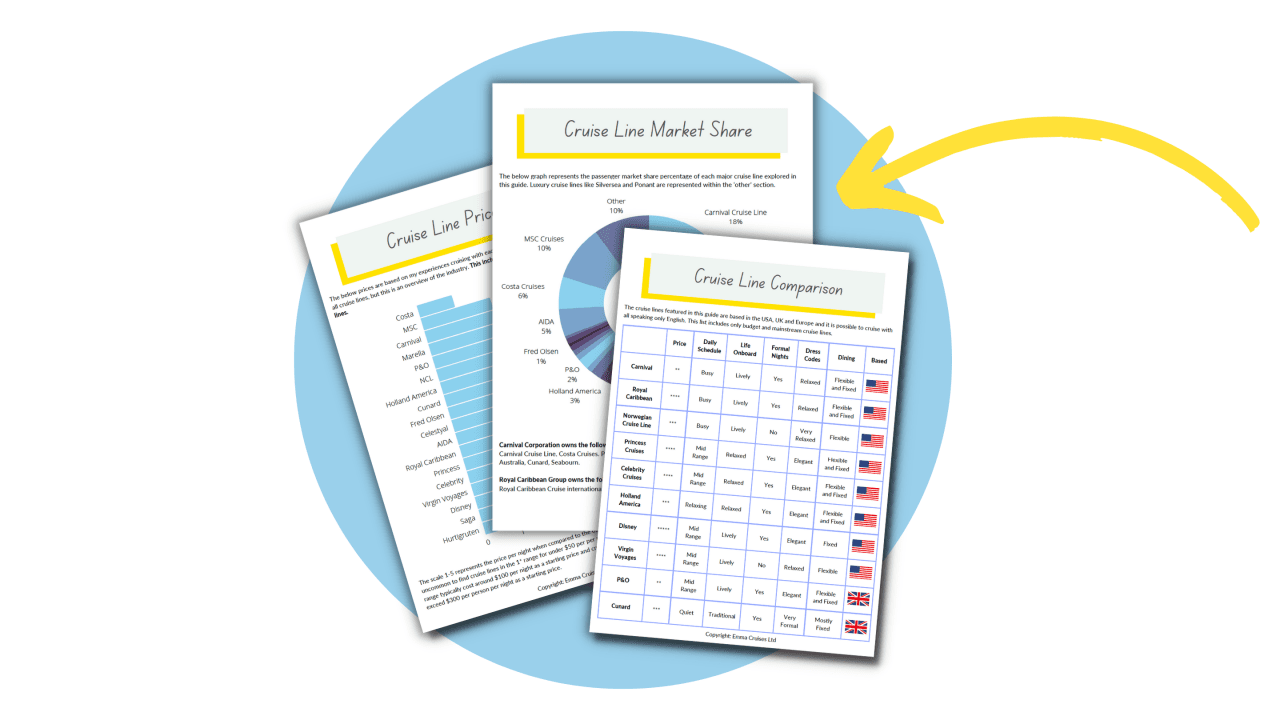
Free Insiders Cruise Line Guide
Ever wondered how the mainstream cruise lines compare? Cruise lines won’t tell you this, but I will.
This FREE guide shows you everything you need to know to find your perfect cruise line.
Whenever I take a cruise I order a print of my trip. It uses the real satellite data from the cruise and is always a great conversation starter!
I'm building an impressive collection...
Code EMMACRUISES will get you 10% off

